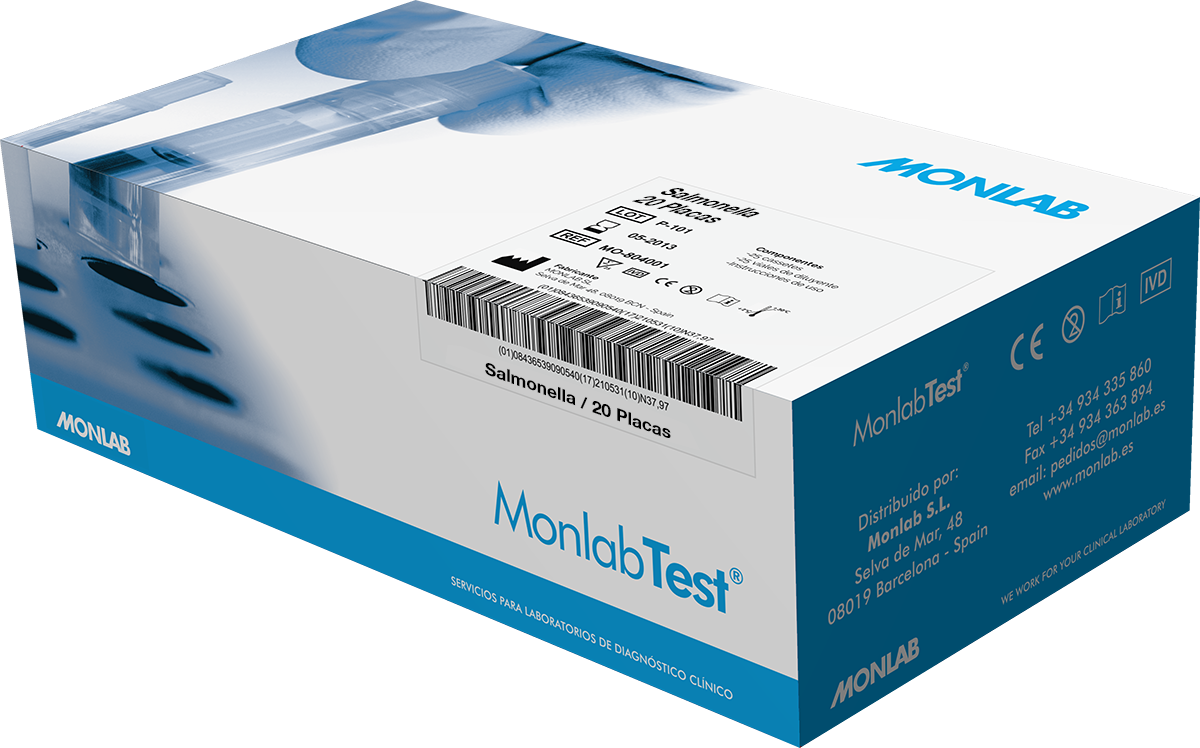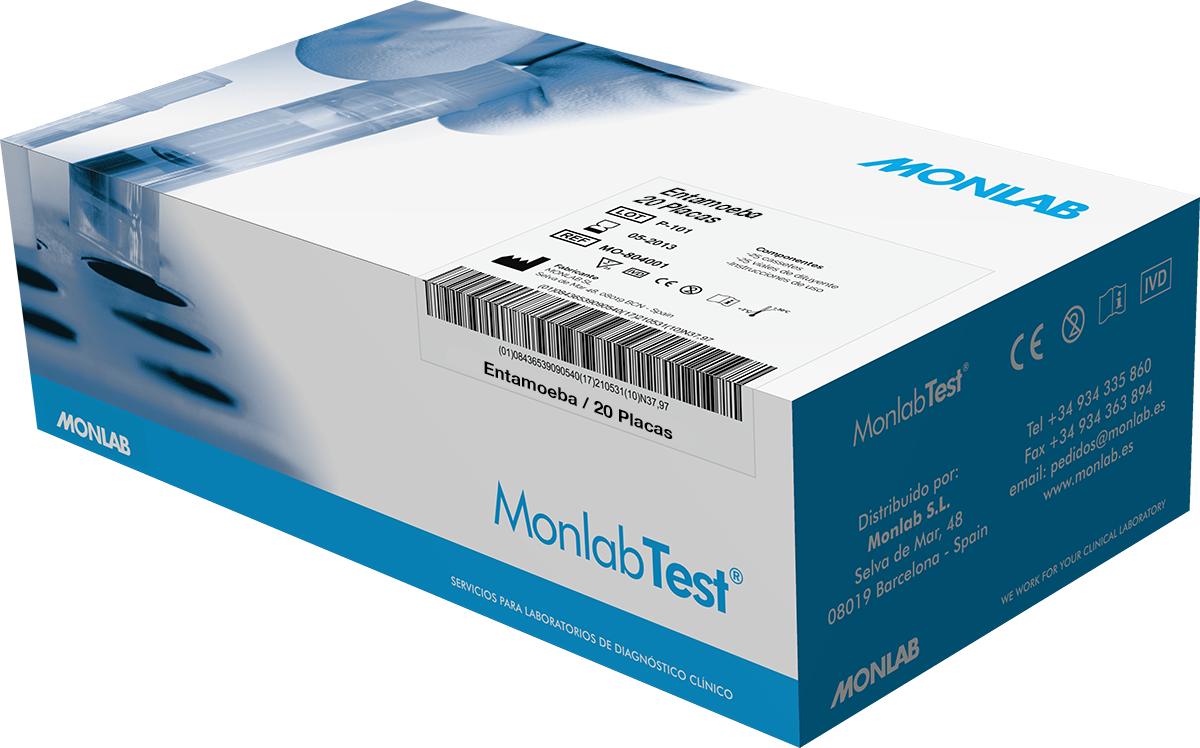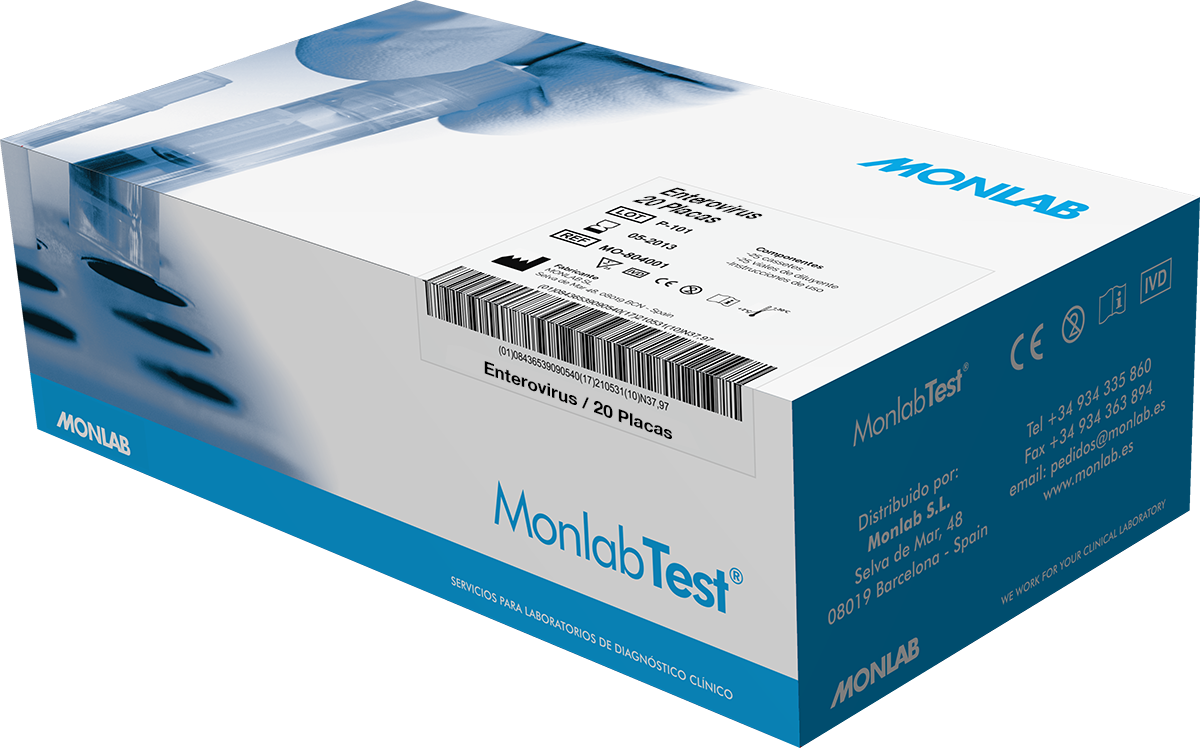Salmonella
Salmonella MonlabTest
Salmonella MonlabTest®
Los cuadros clínicos provocados por una infección por Salmonella enterica en humanos se dividen en: fiebre tifoidea, causada por Salmonella enterica serotipos typhi y paratyphi y en otros cuadros clínicos, que incluyen enfermedad diarreica, provocada por Salmonellas no tifoideas (NTS) que son aproximadamente unos 2500 serotipos. La fiebre tifoidea es una enfermedad exclusiva de humanos, altamente adaptada, de tipo invasivo y sistémica en adultos y niños asociada con inmunosupresión. Por el contrario, NTS, presenta una amplia variedad de hospedadores vertebrados y su epidemiología incluye alimentos de origen animal, al menos en los países industrializados donde normalmente se presenta como gastroenteritis. La enfermedad causada por NTS más grave e invasiva normalmente está asociada con el estado inmunocomprometido de los adultos infectados con VIH. Esta enfermedad invasiva por NTS también es muy común en niños africanos igualando la morbilidad de la anemia grave, la desnutrición y la infección por el VIH.

-
Ref.
MO-804024 -
Pres.
20 placas
 IFU Salmonella
IFU Salmonella
